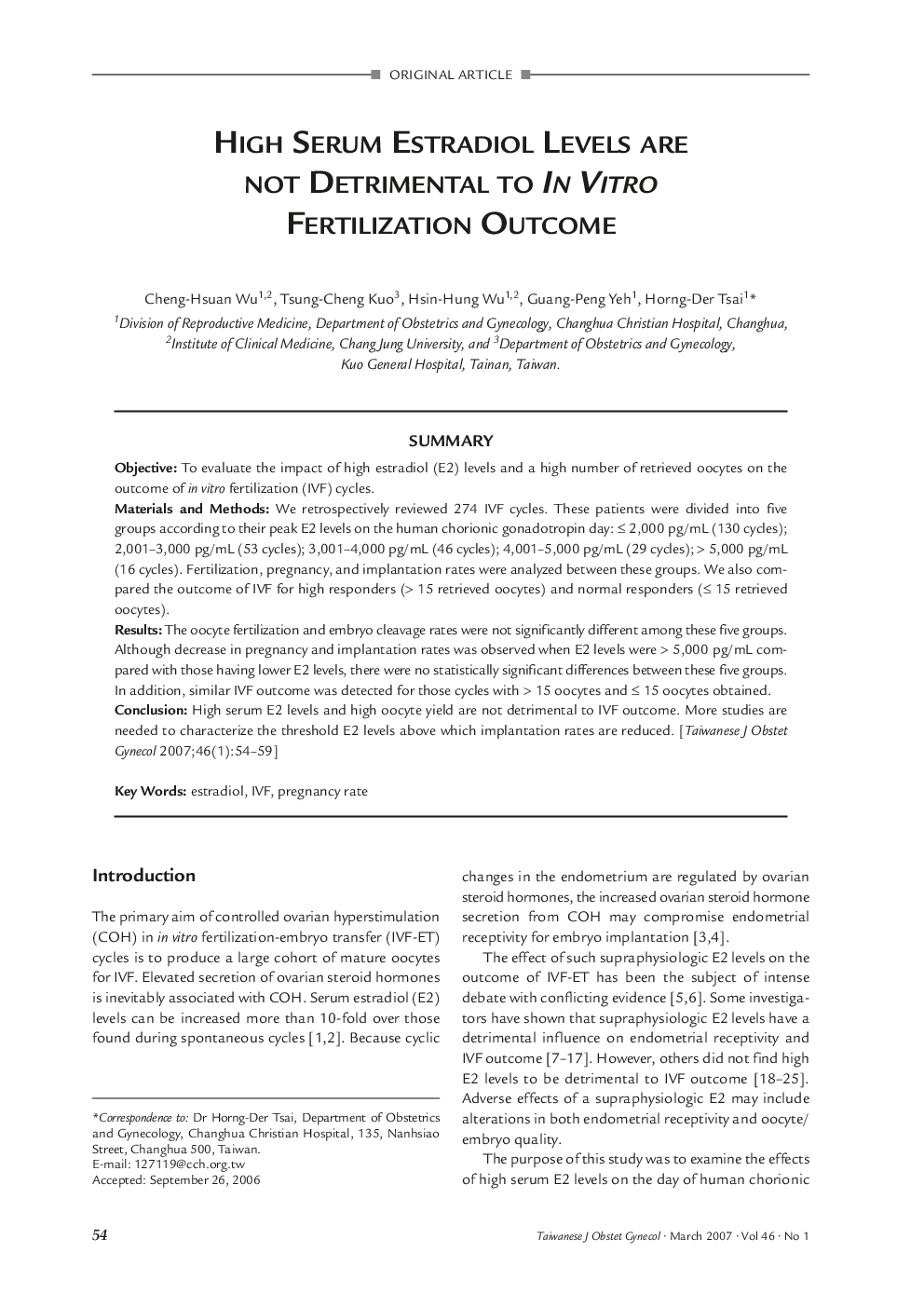| Article ID | Journal | Published Year | Pages | File Type |
|---|---|---|---|---|
| 3976132 | Taiwanese Journal of Obstetrics and Gynecology | 2007 | 6 Pages |
SummaryObjectiveTo evaluate the impact of high estradiol (E2) levels and a high number of retrieved oocytes on the outcome of in vitro fertilization (IVF) cycles.Materials and MethodsWe retrospectively reviewed 274 IVF cycles. These patients were divided into five groups according to their peak E2 levels on the human chorionic gonadotropin day: ≤ 2,000 pg/mL (130 cycles); 2,001–3,000 pg/mL (53 cycles); 3,001–4,000 pg/mL (46 cycles); 4,001–5,000 pg/mL (29 cycles); > 5,000 pg/mL (16 cycles). Fertilization, pregnancy, and implantation rates were analyzed between these groups. We also compared the outcome of IVF for high responders (> 15 retrieved oocytes) and normal responders (≤ 15 retrieved oocytes).ResultsThe oocyte fertilization and embryo cleavage rates were not significantly different among these five groups. Although decrease in pregnancy and implantation rates was observed when E2 levels were > 5,000 pg/mL compared with those having lower E2 levels, there were no statistically significant differences between these five groups. In addition, similar IVF outcome was detected for those cycles with > 15 oocytes and ≤ 15 oocytes obtained.ConclusionHigh serum E2 levels and high oocyte yield are not detrimental to IVF outcome. More studies are needed to characterize the threshold E2 levels above which implantation rates are reduced.
